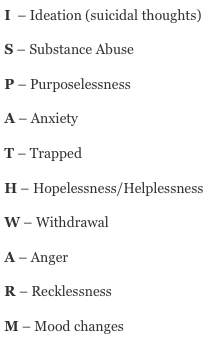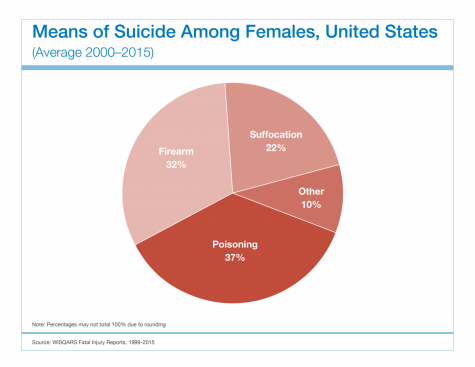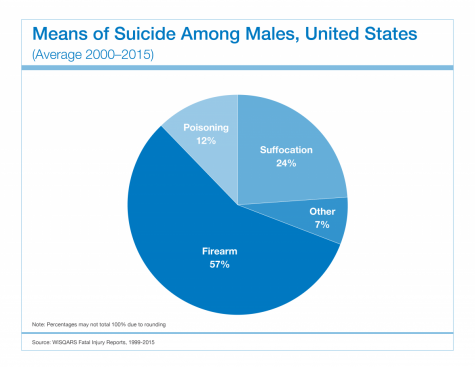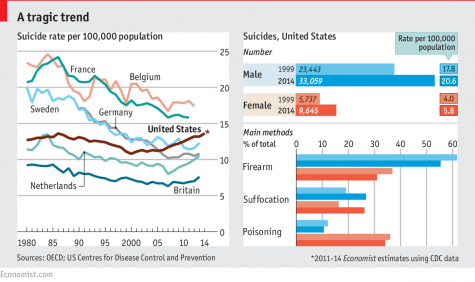Have you had “The Talk” with a teen yet?
Contrary to myth, talking about suicide CANNOT plant the idea in someone’s head to commit suicide. It can actually save a live, or community lives. You also give your child permission to bring up the subject again in the future.
 National Suicide Prevention Lifeline
National Suicide Prevention Lifeline
1-800-273-TALK (8255)
The Lifeline (@800273TALK) · Twitter
(The Lifeline is a 24-hour toll-free phone line for people in suicidal crisis or emotional distress. An online chat option is also available.)
There are roughly 30,000 suicides in the United States each year, and three-fourths of those are men. But the number of attempted suicides is at least 10 times that, and even that estimate may be low because many suicide attempts are usually classified as lacerations or accidental poisonings when patients receive treatment in hospital emergency rooms.
Although suicide rates are lower among women, women lead men two to one in suicide attempts.
According to the American Psychiatric Association, of all young people who suffer from depression will eventually attempt suicide at least once. Of the more than – of young people who attempt suicide due to depression, more than 7% will die as a result. 53% of teens who commit suicide abused alcohol.
How can you tell if someone might be depressed or contemplating suicide?
- Saving the life of someone from suicide depends on our ability to recognize those people who are in distress and may be at risk. The American Association of Suicidology developed a simple tool that is available for everyone to use to remember the warning signs of suicide. This tool is called “IS PATH WARM” and outlines the key points to remember.

Suicidal thoughts are often a plea for help and a desperate attempt to escape from problems and distressing feelings. You should encourage the suicidal person to do most of the talking, if they are able to.
They need the opportunity to talk about their feelings and their reasons for wanting to die and may feel great relief at being able to do this. It may be helpful to talk about some of the specific problems the person is experiencing.
Discuss ways to deal with problems which seem impossible to cope with, but do not attempt to ‘solve’ the problems yourself.
What are the statistics for men and women who attempt suicide?
While men are more likely to die as a result of a suicide attempt, women are more likely to engage in what is known as deliberate self-harm (DSH) or self mutilation.
DSH involves any sort of self-harming behavior, whether or not the intent is to commit suicide.
Research suggests that people who use self mutilation are not usually trying to kill themselves, though sometimes they do. While many people associate self harm with a desire for attention, it is not, and is often done in private. Examples of DSH include non-lethal drug overdoses and self-injury such as cutting.
While suicide may not be the motivation, many people who engage in self-harm may be having suicidal thoughts, and may also go too far in their self-harming behavior resulting in unintentional suicide.
- The landmark study, a collaboration between Lund University in Sweden and Stanford University, showed that the rate of suicide among men is almost three times that of women. In the U.S., the rate is even higher — almost four times as many males as females die by suicide, according to the Centers for Disease Control and Prevention, National Center for Injury Prevention and Control.

Common suicide methods in men include:
- Firearms
- Hanging
- Asphyxiation, or suffocation
- Jumping
- Moving objects
- Sharp objects
- Vehicle Exhaust Gas
Common suicide methods in women include:
- Self-poisoning (women four times as likely as men to die from drug poisoning)
- Exsanguination (bleeding out from a cut such as a “slit” wrist)
- Drowning
- Hanging (one study found that men and women are both just as likely to die by hanging)
- Firearms (women were 73 percent less likely to use firearms as men)
According to the APnews, suicides in Tennessee have reached the record breaking high. An average of three people died by suicide each day in Tennessee in 2016, the highest recorded in the state in more than 35 years.

A few facts to end with:
- Nearly 30,000 Americans commit suicide every year.
- In the U.S., suicide rates are highest during the spring.
- Suicide is the 3rd leading cause of death for 15 to 24-year-olds and 2nd for 24 to 35-year-olds.
- On average, 1 person commits suicide every 16.2 minutes.
- Each suicide intimately affects at least 6 other people.
- About 2/3 of people who complete suicide are depressed at the time of their deaths. Depression that is untreated, undiagnosed, or ineffectively treated is the number 1 cause of suicide.
- There is 1 suicide for every 25 attempted suicides.
- Males make up 79% of all suicides, while women are more prone to having suicidal thoughts.
- 1 in 65,000 children ages 10 to 14 commit suicide each year.
- There are 2 times as many deaths due to suicide than HIV/AIDS.
- Over 50% of all suicides are completed with a firearm.
Suicide is the 10th leading cause of death in the US.
Sources:
http://www.sprc.org/about-suicide/warning-signs
https://www.verywell.com/gender-differences-in-suicide-methods-1067508
https://www.dosomething.org/us/facts/11-facts-about-suicide
https://www.psychologytoday.com/blog/just-listen/201408/male-suicide-vs-female-suicide
My name is Casey Tomlin and I am a senior at Hillsboro High School in the Global Health and Science Academy.
My interests are reading, listening to...











